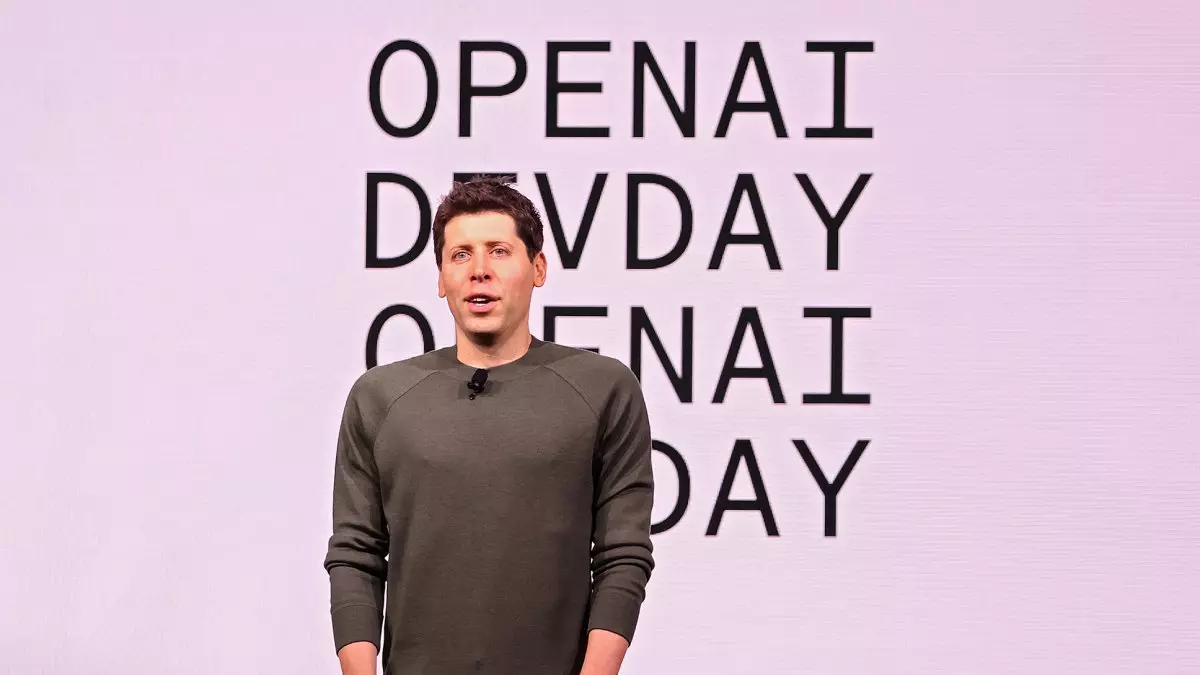The artificial intelligence landscape is evolving rapidly, yet Major players in the sector are grappling with significant challenges. OpenAI, a frontrunner in AI development, is currently facing hurdles that are limiting its product releases and capabilities. During a recent Ask Me Anything (AMA) session on Reddit, CEO Sam Altman shed light on a pressing issue: the company’s insufficient compute capacity. This revelation not only highlights internal constraints but also reflects broader industry challenges regarding infrastructure that supports cutting-edge AI technology.
OpenAI’s models are becoming increasingly intricate, necessitating a proportional increase in computational resources. Altman acknowledged that with the growing complexity of generative models, the company finds itself in a precarious position when prioritizing compute allocation among various ambitious projects. Essentially, the more advanced the AI becomes, the more compute power is required for training these models effectively. This has led to difficult decisions that delay the rollout of innovative features and products that users have come to expect from OpenAI.
Current reports indicate that the company has been facing challenges in securing the necessary computational infrastructure. For instance, a recent partnership with Broadcom aims to develop a specialized AI chip expected to launch around 2026. This collaboration exemplifies efforts to address internal compute shortages, though such long-term developments do not resolve immediate issues. Consequently, the delays are manifesting in the inability to enhance existing offerings like the much-anticipated Advanced Voice Mode for ChatGPT.
The Advanced Voice Mode, which aims to integrate visual cues into its conversational capabilities, is experiencing setbacks. Initially teased in April, this feature has yet to incorporate the vision capabilities that were showcased during a press event. Interestingly, reports have surfaced suggesting that the hurried development of these capabilities was partly intended to divert attention away from significant announcements by competitors, particularly Google, during their I/O developer conference.
Internally, there seems to be a disconnect, with not all team members feeling ready for the public unveiling of certain technologies. The fact that the voice-only version of Advanced Voice Mode faced a prolonged delay underscores the pressures that exist within the company to deliver compelling products in a competitive market. With evolving expectations, like those for OpenAI’s image generator, DALL-E, it’s becoming clear that prolonged timelines may be the new norm.
OpenAI is also expanding its toolkit beyond text-based models, entering the video generation arena with Sora. However, this project is reportedly trailing behind its competitors from companies like Luma and Runway. The processing speed of Sora has been criticized, taking an excessive amount of time just to generate short video clips. Indeed, the longer the processing time, the less competitive the tool becomes, ultimately affecting user adoption and satisfaction.
Moreover, leadership transitions complicate the situation further. The departure of key personnel, like Tim Brooks, who left for Google after co-leading the Sora project, raises questions about continuity and the feasibility of future improvements. Altman’s candid remarks in the AMA indicated that while enhancements are forthcoming, the timeline is uncertain, highlighting the unpredictability facing many advanced projects at OpenAI.
Despite the challenges and uncertainties, Altman remained optimistic about the company’s direction. He mentioned a commitment to improving their reasoning models and hinted at exciting features associated with the o1 series, which are expected to be unveiled in the near future. The approach to potentially allowing adult content in ChatGPT showcases OpenAI’s willingness to explore diverse user needs, provided safety and ethical considerations are met.
Overall, while OpenAI’s aspirations remain high, the reality of compute limitations and competitive pressures paints a complicated picture for the company’s near-term future. As it continues to grapple with infrastructural challenges, the need for innovation remains paramount. The question now is whether OpenAI can navigate these turbulent waters effectively, delivering on the promise of next-generation AI while keeping pace with its competitors.

